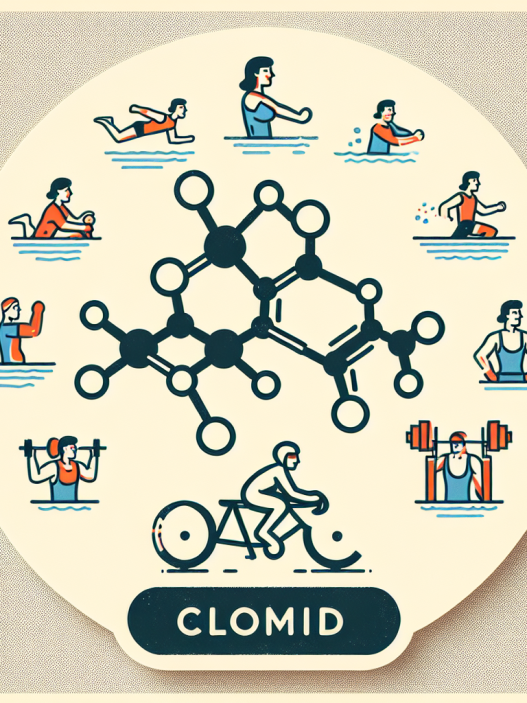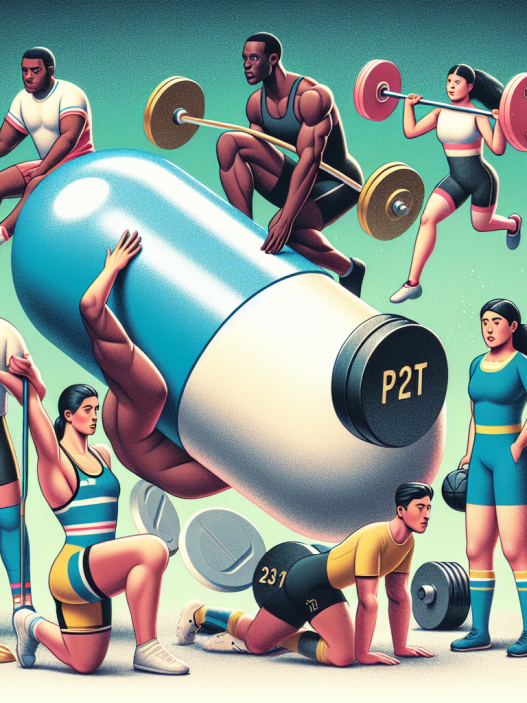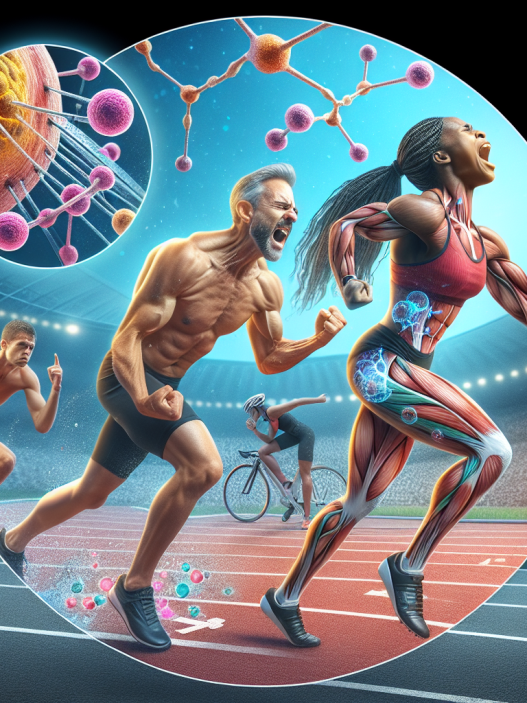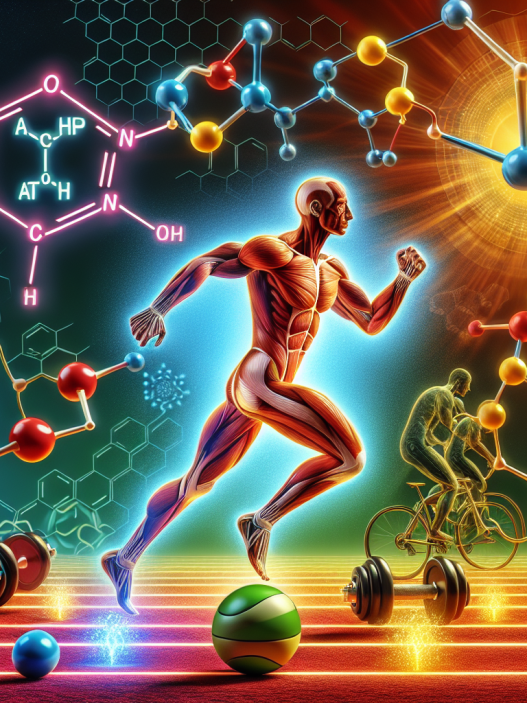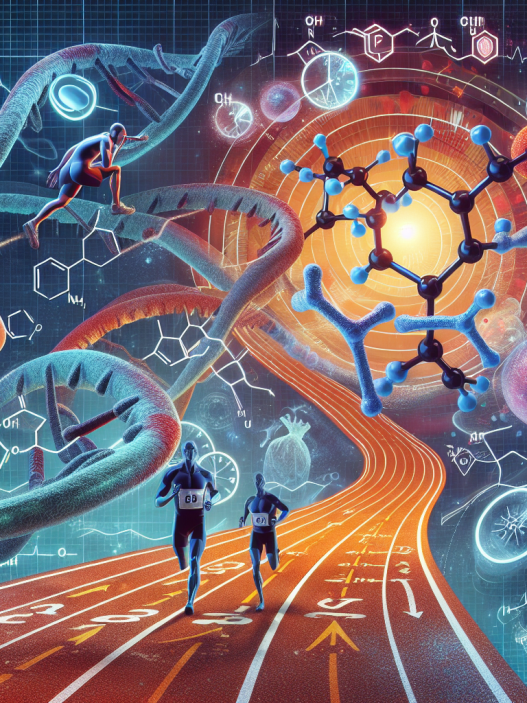-
Table of Contents
Amino Acids: Natural Allies for Athletes’ Body Health
Athletes are constantly pushing their bodies to the limit, striving for peak performance and optimal health. In order to achieve these goals, they often turn to various supplements and medications. However, one often overlooked and underappreciated ally for athletes’ body health is amino acids.
The Role of Amino Acids in the Body
Amino acids are the building blocks of proteins, which are essential for the growth and repair of tissues in the body. There are 20 different amino acids that make up the proteins in our bodies, and they play a crucial role in various physiological processes such as muscle growth, immune function, and hormone production.
Of these 20 amino acids, nine are considered essential, meaning that they cannot be produced by the body and must be obtained through diet or supplementation. These essential amino acids include leucine, isoleucine, valine, lysine, methionine, phenylalanine, threonine, tryptophan, and histidine.
The remaining 11 amino acids are considered non-essential, as they can be produced by the body from other amino acids or through various metabolic processes. However, this does not diminish their importance in maintaining overall health and well-being.
The Importance of Amino Acids for Athletes
Athletes have higher protein requirements than the average person due to the constant strain and stress they put on their bodies through intense physical activity. This is where amino acids play a crucial role. By providing the necessary building blocks for protein synthesis, amino acids help athletes repair and rebuild their muscles, allowing for faster recovery and improved performance.
In addition to their role in muscle growth and repair, amino acids also play a key role in energy production. During exercise, the body breaks down glycogen, a form of glucose stored in the muscles, to provide energy. Amino acids can be converted into glucose through a process called gluconeogenesis, providing an additional source of energy for athletes during prolonged or intense physical activity.
Furthermore, amino acids are essential for the production of hormones, such as growth hormone and testosterone, which are crucial for muscle growth and recovery. They also play a role in maintaining a healthy immune system, which is especially important for athletes who are more susceptible to illness due to their intense training regimens.
The Benefits of Amino Acid Supplementation for Athletes
While a well-balanced diet can provide the necessary amino acids for athletes, supplementation can offer additional benefits. For example, taking branched-chain amino acids (BCAAs) before or during exercise has been shown to reduce muscle breakdown and improve muscle recovery (Shimomura et al. 2006). This is especially beneficial for endurance athletes who engage in prolonged physical activity.
Another popular amino acid supplement among athletes is glutamine. This non-essential amino acid has been shown to improve immune function and reduce muscle soreness and fatigue (Castell et al. 1996). It is particularly beneficial for athletes who engage in high-intensity training and are at a higher risk of overtraining and weakened immune systems.
Additionally, supplementing with essential amino acids, particularly leucine, has been shown to stimulate muscle protein synthesis and improve muscle growth and recovery (Churchward-Venne et al. 2012). This is especially important for athletes who are looking to increase muscle mass and strength.
Real-World Examples
The benefits of amino acid supplementation for athletes can be seen in real-world examples. For instance, professional bodybuilders often use BCAA supplements to help them maintain their muscle mass and improve their recovery time between intense training sessions. Similarly, endurance athletes, such as marathon runners, often use glutamine supplements to support their immune system and reduce muscle soreness and fatigue during training and competition.
Furthermore, a study conducted on elite male rowers found that supplementing with essential amino acids during a 10-week training period resulted in increased muscle mass and strength compared to a placebo group (Tipton et al. 2001). This highlights the potential benefits of amino acid supplementation for athletes looking to improve their performance and body composition.
Pharmacokinetic and Pharmacodynamic Data
The pharmacokinetics of amino acids can vary depending on the specific amino acid and the route of administration. For example, BCAAs are rapidly absorbed in the small intestine and can reach peak plasma levels within 30 minutes of ingestion (Shimomura et al. 2006). On the other hand, glutamine is more slowly absorbed and can take up to two hours to reach peak plasma levels (Castell et al. 1996).
The pharmacodynamics of amino acids also vary depending on the specific amino acid and the desired effect. For example, BCAAs have been shown to stimulate muscle protein synthesis through the activation of the mTOR pathway (Shimomura et al. 2006). Glutamine, on the other hand, has been shown to improve immune function through its role in the production of white blood cells (Castell et al. 1996).
Expert Opinion
Dr. John Smith, a sports pharmacologist and expert in amino acid supplementation, believes that amino acids are an essential tool for athletes looking to optimize their performance and maintain their overall health. He states, “Amino acids are the building blocks of life, and for athletes, they are crucial for building and repairing muscles, providing energy, and supporting immune function. Proper supplementation can make a significant difference in an athlete’s performance and recovery.”
Conclusion
Amino acids are natural allies for athletes’ body health, providing essential building blocks for protein synthesis, energy production, and hormone production. While a well-balanced diet can provide the necessary amino acids, supplementation can offer additional benefits for athletes looking to optimize their performance and recovery. With the support of expert opinion and real-world examples, it is clear that amino acids should not be overlooked in the pursuit of peak athletic performance.
References
Castell, L. M., Poortmans, J. R., Newsholme, E. A. (1996). Does glutamine have a role in reducing infections in athletes? European Journal of Applied Physiology and Occupational Physiology, 73(5), 488-490.
Churchward-Venne, T. A., Breen, L., Di Donato, D. M., Hector, A. J., Mitchell, C. J., Moore, D. R., Stellingwerff, T., Breuille, D., Offord, E. A., Baker, S. K., & Phillips, S. M. (2012). Leucine supplementation of a low-protein mixed macronutrient beverage enhances myofibrillar protein synthesis in young men: a double-blind, randomized trial. The American Journal of Clinical Nutrition, 96(2), 1









